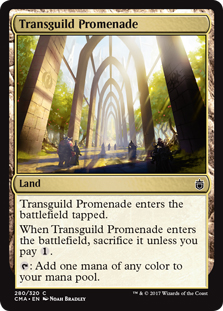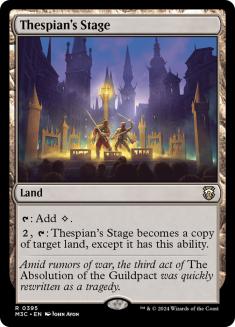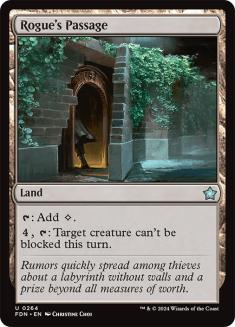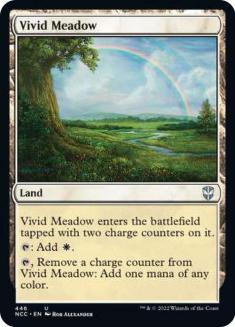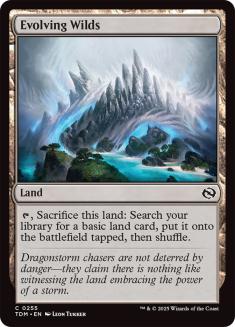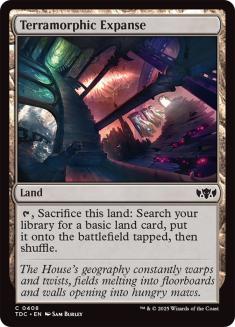Before we get into the column this week, we have some unfortunate news. You may have noticed that Dear Azami was not published last week; we have
previously never missed a week since the column’s inception, and this is #156 in the continuing series. Cassidy ran up against a rough deadline last week
with work and family stress piled on top of the several-hours commitment it takes to write this column and do it well, and with neither work commitments nor family
life looking to ease up anytime soon Cassidy had to shed a commitment somewhere. It turned out that the sanest one to step away from was this column, ending his tenure here at Dear Azami at least for the moment.
He will be missed, and of course, he will be welcome back here at StarCityGames.com whenever in the future his schedule might allow for a return – but in
the meantime we still face the complication that led me to share half the time on this column with another author. I am finishing working on one book and looking to dive right back another one I had put down in the middle when that one is finally finished, and I would never get any of
these things done if I was committed to writing Dear Azami on a weekly basis. However, people seem happy to read Dear Azami every week –
which means stepping past any ego and bringing on a co-writer. Next week we’ll have David McDarby returning to the column to step in for Cassidy in the
near term, but we haven’t figured out if this is going to be a permanent solution yet… and since it worked so well the last time even if it was by chance and
happenstance, I’m happy to audition potential co-authors to join the column. So if you’re big on Commander and a writer to boot, feel free to shoot us all
an email at this address if you’d like to be considered for an upcoming slot here at Dear Azami. And if you’re not a writer but know somebody who is – do that writer a favor and give them a heads-up, all right? We writerly folks
always appreciate a good tip now and again…
Now, back to our regularly-scheduled deck doctoring!
— Sean
“Our chief weapon is surprise. Surprise and fear… our two weapons are fear and surprise and ruthless efficiency…”
Ruthless efficiency is great and all, but if we get too ruthlessly efficient we’re no longer playing a fun game of Commander, suddenly we’re looking at our
opponents like they are just so many walking, talking cuts of meat – separate here! So we’re going to focus mostly on the surprise factor while upping your
efficiency, and giving a few cards your opponents should rightly be afraid of while we’re at it. The most important of those cards, to me, is the one that
asks you to take your hands off of the steering wheel – how do you win a game on purpose if you’re not allowed to plan? There is
something to be said for the “chaos” element that red offers to Commander if you want to build in that direction, as a flavor you can mix into your
ordinary tactics to achieve extraordinary results, and we’re going to go a little bit in that direction as well while we’re at it. After all – you said you
didn’t mind if the inquisition got you sometimes, and I intend to hold you to that.
First off, we just need to do a card count: this comes to 92, so we have seven slots left to fill if we want to use them… and we’ll put that to good work
as we fill out the rest of these slots.
Let’s get the boring stuff out of the way first and work on your mana. I had to guesstimate your budget based on what was already present; you could have a
much fancier, and smoother, manabase if you wanted to pay an inordinate amount to get there… but you don’t need an expensive manabase in order to play a
good game, so I looked at the different types of dual lands you were already playing and played the “cycle completion” game. I saw two out of three Ravnica
dual lands and Theros Temples, plus a Ravnica bounceland, and figured that you’d get the most bang for your buck by playing the full cycle of each of
these. Our substitutions here are simple, and also not especially interesting, so let’s make the swaps and get to the meaty part of the decklist:
Out:
In:
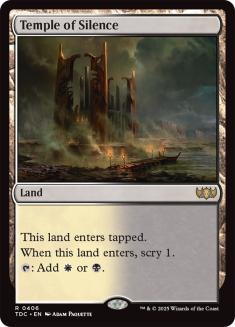
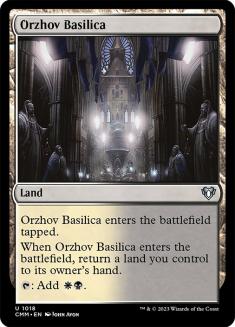
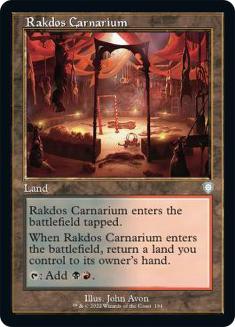
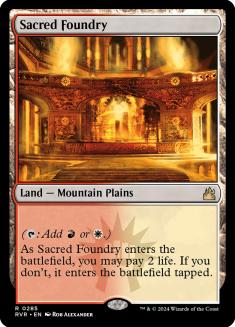

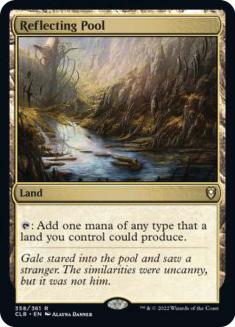
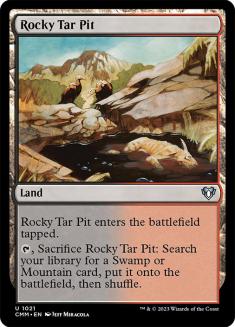
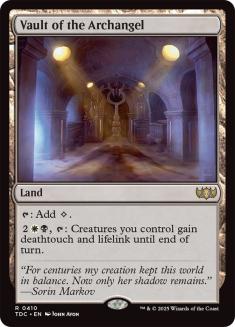

While we’ve kept the same number of lands coming into play tapped – four out, then four back in – each one will now make two colors of mana instead of one
(… or just generally being junky, as in the case of Transguild Promenade, which makes you stumble too readily in the early turns for the benefits it is
supposed to provide). I would prefer to get a little bit more spend-y with the deck here, as I would prefer to replace the cycle of Guildgates with the
Shadowmoor / Eventide hybrid mana lands in order to increase the number of lands coming into play untapped, but that’s a lot of expense for not necessarily
that much gain so I’m content to leave the manabase as-is at this point.
We also get to straight-up add a land, and while my usual answer of which colorless utility land to add tends to come down on Winding Canyons, for this
specific deck I see a lot of benefits to be gained from Vault of the Archangel – you’re trading life as a resource, and you have access to a fair number of
token creatures floating around that become much more dangerous if only they had Deathtouch, so this is my first choice of an extra land to add while we’re
at it.
We move next to the artifacts, where I have two cuts to make and five replacements with some of those extra slots available:
OUT:
Glaring Spotlight – Hexproof is not really a problem, even when it looks like a problem – adding more sweepers to your deck will resolve all of the
problems you’re typically experiencing with hexproof creatures, it’s only the really pesky stuff (like Hexproof stapled onto a truly problematic creature,
like Avacyn, Angel of Hope) that requires the sort of hyer-specific solution this card presents. You’ll use it most commonly to make your team unblockable,
and that’s not actually that good of a use for a card in what looks to be a control-style shell.
Elbrus, the Binding Blade – This seems like it’s just here “for fun,” not with any serious intent to ever maximize the card by flipping it and then pushing
people down flights of stairs to get a +13/+13 counter. As a “fun” card, it’s too expensive and does far too much nothing, making it not actually very fun
at all. Sad, really.
IN:
Thousand-Year Elixir – You have just the one creature with really meaningful tap abilities, your commander – but your commander is absolutely critical to
your deck’s plan, so a card that does nothing but maximize your commander’s playability is fine by me. The more conservative choice would just be a pair of
Boots, be they Swiftfoot Boots or Lightning Greaves, so that you can share the untargetable + haste benefit with your entire team over the course of a
game… but when you do draw the Elixir with your Commander, you’ll gain that haste without needing to even target it first… and gain
the ability to double up activations, tapping to recruit two creatures a turn instead of just one. I really want to build to that specific mid-game to
end-game plan, so I’m fine with the card being comparatively blank otherwise.
Oblivion Stone – You need a little bit more board control just in general, with a reliable source whose outcome you can plan around and effectively
predict. O-stone is Old Reliable for that job, so we’ll put it to work here as well, boring though that job may be.
Staff of Domination – I wanted a little bit more of everything here, and it turns out Staff of Domination is good for that. I wanted another way to untap
your commander and put that tap effect to work more times in a turn, and Staff does that. It also acts as a defensive countermeasure, card draw, and life
gain while we’re at it – all of these being things I thought you could use a little bit more of, but were a little tight on slots for. Nothing “breaks” in
your deck with a Staff, it’s not like you can achieve infinite mana by tapping Magus of the Coffers and untapping it or anything like that, so it’s just
here to provide consistent value turn after turn.
Armillary Sphere – Card advantage and mana development are both going to be very important for this deck; you don’t really have that much in the
way of card draw, and you have a lot of expensive six- and seven-drop creatures that you really want to put to work, so hitting your land drops on-time and
consistently is going to be very important to this deck. It’s the little things that matter, and this is the sort of card your deck needs to operate at
peak effectiveness even if it doesn’t look like it really did anything.
Darksteel Ingot – A card I almost always move right past or take out of a deck, in this case it’s getting added because you need the ramp and have few
other options – I had to choose between this and Wayfarer’s Bauble, or being “boring” and adding the Solemn Simulacrum you weren’t playing, and decided to
go with the rock-solid accelerator that sticks around forever because there is a card or two that can take advantage of it being in play.
Next up we have the rest of your spells, where I put about a third of them up on the chopping block…
Consistent Theme Matters
This deck seems very clearly to focus on making big plays and frustrating your opponents’ plans at the margins with every opportunity. There are some
disruptive permanents like Stranglehold and all of the cards banning lifegain that set the rules, dictating what is going to be possible for the opponent
in the first place, that I see as the “inquisition” part of the deck. There is also a clear “Legends Matter” sub-theme as well, with most of your attackers
happening to enjoy a boost from Heroes’ Podium. There’s also a reanimation/recursion theme going which I feel is actually over-represented here, since
you’re not really playing any cards to fill up your graveyard – you’re counting on the big legendary monsters you’re casting to die in order for you to
have something worth reanimating, so it would make sense here to cut back on some of that or at least try to phase in cards that do that and something else.
You have twenty-eight spells, and I’m going to cut nearly half of them – pulling eleven out and only putting nine back in, with the other slots moving over
to buff your creature count and one slot already given over to the artifacts section. Those unlucky eleven are:
Greed – This just isn’t going to cut it anymore, as you’ll see when I get around to replacing it.
Legion’s Initiative – This card is more quirky and cute than functional, yes it can give you an extra attack step and that can even re-trigger Aurelia so
you get in for mondo damage, but that’s not really the sort of effect you’re looking for in this deck.
Martial Law – I would rather run Icy Manipulator than try and detain things, and I don’t think you want that either. This just feels like an awkward fit
trying to find a home for an interesting card and it isn’t really working out here.
Underworld Dreams – Perhaps this is part of the “Inquisition” theme, trying to constrain an opponent’s options by boxing them in with a painful price tag
on that thing they wanted to do. But I don’t think the price is high enough to actually stop them, and this would function better as something like Painful
Quandary to really tax opponents of their resources. (And since I don’t really like Painful Quandary as I have wriggled out of it quite easily
when I’ve had to try, I don’t think this slot is really working for this deck.)
Chained to the Rocks – This is really just asking an opponent to do something cute with a Strip Mine or Ghost Quarter at an inopportune moment. While this
is high-quality removal in Standard, the downsides are very, very real in this format, so you’d be better-served relying on a more permanent
answer (Swords to Plowshares, Path to Exile, or similar) rather than temporarily inconveniencing an opponent who then has an incentive to mess with your
lands.
Kirtar’s Wrath – We can do better than this without trying very hard.
Anger of the Gods – A weak sweeper effect in this format, this too asks for an upgrade. Even the “exiles” clause that prevents all sorts of shenanigans is
something we can replicate if we try, with cards like Final Judgment, so we need to find the card that is the best fit for the deck rather than the card
that was easiest to find during deckbuilding.
Obzedat’s Aid – We just have too much of a focus on reanimation here, and it is all pretty weak with nothing in the deck focusing on setting aside things
worth reanimating.
Tyrant’s Choice – Innocent Blood would be better, if you need to force your opponents to sacrifice, but realistically speaking this just makes everyone
take four damage – not what this deck is trying to do with its spell slots.
Boros Charm – I have actually really come to appreciate this one, after slotting it into my Sliver Queen planeswalker control deck as a Sunforger
target. I’ve given my Commander double strike to kill someone, I’ve actually domed someone to death with the Charm as the last four damage, and making my
board indestructible has been invaluable in the face of cards like Obliterate and Ruination (not to mention more mundane Wrath effects). That said, the
real reason that card is any good in my deck is Sunforger, and I don’t really feel slotting in Sunforger and the associated cards to have a “Sunforger
package” of tutorable targets is going to fit very well here. If you went there, this would be a good target – but I think building every deck that can into a Sunforger deck is boring, so we’re skipping it here.
Archangel’s Light – I don’t really like the cost vs. effect here; if you wanted a Feldon’s Cane style effect you could get it for three mana with Elixir of
Immortality and get to keep the recursion card too… and you’d still get five life, versus however much you suppose you’re getting from this. There’s just
one problem, though: by the time you’re getting to the stage of the game where this is worthwhile, you are almost certain to have shut off the ability to
gain life by then, making this card an expensive do-nothing.
Adding back in, we have nine replacements:
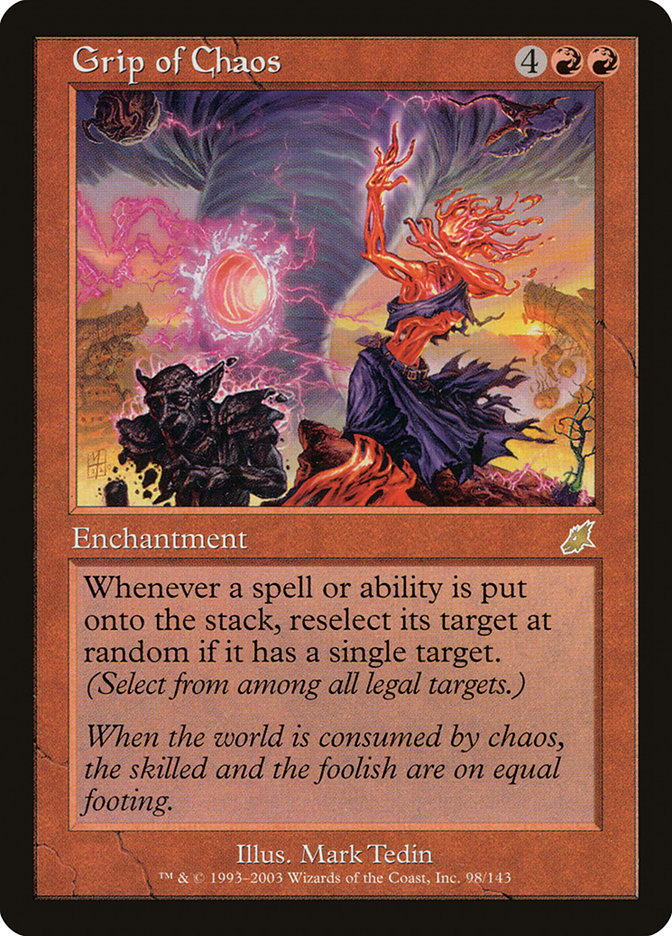 Grip of Chaos – “Our chief weapon is surprise. Surprise and fear…” Remember that whole “strategy” thing that
Grip of Chaos – “Our chief weapon is surprise. Surprise and fear…” Remember that whole “strategy” thing that
people tend to use in order to figure out a way to win the game? With this card in play, the Inquisition is on: you cannot plan, you can only be
surprised… or live in fear that your cards will turn awry, bent to work against their master. I have seen a lot of “chaos” decks that go whole-hog on
this side of things, basically trying to build an unplayable game where anything can happen and nothing anybody does matters… the kind of game you just
want to get up and walk away from after the second Warp World or Scrambleverse. We aren’t trying to make things weird for weirdness’s sake, we’re trying to
make plans ineffective so that opponents cannot find a way to defeat us without putting themselves at risk as well. Of all the chaos cards, I’ve found this
one to be the most effective, as it pressures you to change how you think about the cards in your hand and the game you’re playing quite drastically. It
works because…

Confusion in the Ranks – Tariel’s ability gives us a random creature, not necessarily the creature of our choice. Sometimes we may get the best threat, and
it’ll be awesome… but far more often the dice are loaded in favor of plucking out a Sakura-Tribe Elder or Solemn Simulacrum that may be useful but isn’t
what we need. Confusion in the Ranks trades any creature you play for the best creature in play, greatly improving Tariel’s tap ability
from its otherwise-random value.
Grave Betrayal – Your opponents’ stuff being on your side of the board is what we want to see happen, and in this deck it gives us a lot of strategic value
in return for its admittedly quite-high cost. I like this card a lot but you can’t just jam it everywhere, and in this deck it will help make up for the
fact that we’re otherwise quite slow when it comes to playing threats onto the table. (And for anyone who asks why it wasn’t in the Marchesa deck from last time, it would’ve been
broken and no fun at all with Marchesa, that’s why.)
Whip of Erebos – We’ve cut back some of the graveyard recursion because it was too laser-focused on one specific task that we don’t need quite
that much of… and only really did the one thing. Whip of Erebos is still graveyard recursion, obviously, but it also provides us with a lot of additional
value – we have a fair number of big creatures to rumble with, and giving them lifelink will potentially let us race opponents who otherwise just deal way
too much damage for us to handle. It’s true that a fair number of our cards shut off the ability to gain life, but even if we only get the recursion side
of this card it’s still pretty good.
Oath of Lieges – This deck has a fair number of “new rules” that limit the opponent’s ability to do things you don’t like, but nothing is really stopping
them from ramping a couple of times and just dropping huge thing after huge thing that demolishes us because we’re so far behind. Oath of Lieges helps with
exactly that – the players who ramp get to do their thing, but everyone else gets to keep up with them for free thanks to this obscure gem, so the usual
“reward” for getting so far ahead is actually a detriment – you get to the top reaches of your mana curve like you intended, yes, but you’ve spent cards to
do so and everyone else has come along with you for free.
Inheritance – This deck needed a little bit more card drawing, and I’ve had excellent success to date with this humble card. I didn’t want it to cost life,
which greatly hindered our selection since the best black card draw spells all use that as the resource you trade for cards in hand, and I didn’t
want it to be another artifact (or so high-powered that people felt they had to eliminate it on sight). Inheritance will basically trigger multiple times a
turn, often more than you could have the mana to trade for cards, and you can reasonably expect this to net you another card or two a turn for the entire
duration of the game if you play things right. Nobody expects this to be good enough to kill… which means you get to draw card after card, turn after
turn, proving it is good enough to kill even though the “exchange rate” of three mana per card and awkward timing doesn’t look like it is even
good enough to play.
Oblation – We cut an “answer” card and I wanted to replace it with a card that can answer anything. That multi-purpose tool is Oblation, capable of tucking
a Commander or removing even an indestructible permanent from play. Whatever the problem is that ails you, so long as it isn’t a land or untargetable for
some reason, Oblation can solve it.
Martial Coup, Austere Command – I felt this deck was a little light on the sweepers still, especially when it comes to answering non-creature permanents,
and we needed to upgrade that Kirtar’s Wrath to something more powerful. Austere Command has the flexibility to solve really problematic board states and
also has the power to morph itself around whatever you’ve got in play so that you keep your best stuff while killing everyone else’s top cards, making it
the best there is at what it does, while Martial Coup provides way more board position alongside of a Wrath than Kirtar’s Wrath does. Admittedly
it costs seven, not six, to get the Wrath effect… but it also doesn’t stop at seven, if you have eleven, you get even more tokens thanks to its
sliding scale. I’ve used it to put twenty power into play and was quite happy with it then, but even with more reasonable upper boundaries (this deck
doesn’t really ramp or even play Cabal Coffers) you’ll still find you get an awful lot of bang out of this for your mana and cardboard.
Team Inquisition
But the true power of this deck comes from its creatures. You’re playing a lot of legendary powerhouses with the intent that just a few of them can take
control of a game and let you enjoy a dominant board position, and to my mind that means we have to identify the weakest ones and replace them with team
players more in line with what you’re trying to accomplish. That means we’re going to make the following cuts:
Maralen of the Mornsong – The forced life-loss is interesting, and admittedly this combines effectively with Stranglehold to deprive the opponent of the
ability to draw new cards while letting you tutor still each turn, but the power level of this card is problematic – for you. Everyone else gets to Tutor
first, so the most realistic outcome is that you help your opponents find some of their best cards and then somebody kills this before you get to untap,
because they don’t want to see what happens if they let you get whatever you want. (And rightly so, I’d say.) The
way this plays out just doesn’t end well for you, so we need to stop being cute and start being effective.
Banisher Priest, Fiend Hunter – Temporary answers such as these just don’t work out well for you long-term. These have all the same problems that Chained
to the Rocks did but without even the presumption that they might be hard to kill – you have to actually do something on purpose to kill
a land or an enchantment, but small creatures die with the gentlest of sneezes in this format and you can’t rely on either of these to solve any of your
problems. Because we can’t rely on them, we just won’t even try.
Frontline Medic – Indestructible is nice, I agree, but this isn’t a very effective way to gain it – or a very strong creature that is worth playing on its
own. If this is the kind of ability you want to gain, you’re going to need to invest more to obtain it – eight mana for Avacyn, Angel of Hope if you want
it as a static ability, or six mana for Soul of New Phyrexia if you’re willing to put mana into it on the turns in which you need the ability.
Kalitas, Bloodchief of Ghet – You’ll end up with plenty of your opponents’ creatures over the course of a game, you don’t need to use Kalitas in order to
try and maximize that effect. It just costs too much mana to get this effect when you could have Visara the Dreadful or Reaper from the Abyss instead.
(We’re going to add two cards for the one we’ve cut, one efficient and one a little bit more wacky, hopefully to positive effect…)
Pain Seer – Dark Confidant-style effects are not ideal in Commander, and adding Inspired as a requirement to achieve it makes it even harder to use
beneficially since you have to attack with a 2/2 and have it survive before you get that first trigger, making it two turns instead of one to get your
first card back from it (… which may very well cost six or eight life, to boot). We can do better than this.
Mikaeus, the Unhallowed – While it’s true we can’t “go off” with Mikaeus, nobody believes you when you say that and everybody kills it on sight. As well
they should. We want ways to keep our resources near to hand, and we can get that without triggering anybody’s “KILL IT WITH FIRE!” reflexes.
Adding back in, we have ten slots to fill:
Erebos, God of the Dead – Greed is good, but when given the opportunity to take the same card you were playing and splice another card to it as
well, the answer was obvious. You get the life-constraining clause that you were playing Everlasting Torment for and the life-for-cards exchange
rate of Greed, all potentially attached to an indestructible creature as well! And best of all, the clause that prevents lifegain only works for opponents,
potentially letting you still benefit from lifegain cards like Whip of Erebos at the same time as you clamp down on other players’ ability to gain back
life and defend themselves in that way.
Athreos, God of Passage – Taxing people’s life points is what you do once you’ve clamped down on their ability to make more of this resource, and
Athreos lets you potentially put your opponents to a difficult choice: when your creature dies, do they lose the life, or do they let you get it back?
Either side is good for you, and you can pick the opponent that will best give you the answer that you want… whether it be by collusion with an ally or
putting the screws to a player who’s near death. And like Erebos, this can sometimes be an indestructible body, making it all the better.
Weathered Wayfarer – Much like how Oath of Lieges lets you keep up with an opponent who’s gotten ahead of you, Weathered Wayfarer lets you keep making land
drops late into the game so long as anybody at all is staying ahead of you. This is another reason the bouncelands are so key, since they still provide two
mana while putting lands back into your hand and thus keeping the Wayfarer active longer. While Land Tax would be more powerful since it doesn’t cost mana
or even have to survive to do its job and it finds three lands at a clip, Weathered Wayfarer can get nonbasic lands as well, so that power is not the only
metric we’re judging the card on – grabbing a bounceland so we get to keep using the effect even as we make our land drops, or grabbing a Temple so we can
set up our next draw, is way more powerful than just grabbing a bunch of basics. It can even find our Vault of the Archangel, it’s going to be powering up
our game-plan at the same time as it’s generally smoothing our draw and fixing our colors.
Nezumi Graverobber – We do want the ability to remove creatures from an opponent’s graveyard, as this will let us stop any recursion effects they may be
taking advantage of or just help to set things up so that we only get good creatures with Tariel’s ability instead of tapping to put something
junky or detrimental into play. It doesn’t hurt that if you manage to flip it you have another resource that lets you reanimate things, so we’re going to
still end up with about the same amount of that effect as we started with even though we’ve cut some of those pieces – and Graverobber really is just an
army in a can all by itself assuming you’re able to flip it, which is the kind of card we want to rely on in this deck.
Reaper from the Abyss – Due to the fact that you can trigger Morbid more often than you can tap over the course of four players’ turns, Reaper from the
Abyss is the first Visara-like creature I tend to reach for… and this has never disappointed me, thanks to the fact that it can start working as quickly
as my own end step and can take down problem after problem so long as stuff is going on. Ruthless efficiency is one of the aspects of the Inquisition, and
we’ll use this here to good effect.
Defiler of Souls – The Abyss-like effect misses a good chunk of our most important creatures, but can really punish some of the best cards in the format
since so many of the top threats are potent mono-colored creatures. Mostly we’re looking to take advantage of the fact that several of our best creatures
are invisible to this while we can expect it to consistently take down a meaningful creature from our opponents, and it has an immediate impact without
needing anything else to happen in order to start the carnage rolling. It’s not as good as Reaper from the Abyss, but I like this better than Visara here
because it operates on a metric our opponents probably won’t be readily able to predict – there are a lot of good monocolored creatures to kill,
and this on top of other Edict effects (Sheoldred) and kill effects (Reaper from the Abyss) will do a ton of damage to an opponent’s board turn after turn.
There will be no saccing your Solemn Simulacrum to protect your Consecrated Sphinx with this trigger!
Brion Stoutarm – And here we add another lifegain source, one that doesn’t lose its utility if the rules-setting cards prevent that from working as per
usual. If we’re able to use this to gain life turn after turn while dealing damage, great, but if not – we can sacrifice large things to deal a
considerable amount of damage, all while life totals cannot be replenished. People start to die very quickly when you have Brion and a source of fodder to
feed him, which Tariel does quite well.
Kaervek the Merciless – Speaking of damage sources, there’s always Kaervek the Merciless to put your opponents in a tight spot. Kaervek can go to the face
or point at a creature, and the element of fear and danger that he adds to the table is considerable. You can’t have an Inquisition without a merciless
inquisitor asking the tough questions, and Kaervek fills that role quite admirably. Just remember to not be so predictable with your choices – if you
always damage the player who cast the spell or their best thing, people will just plan around that. If you make capricious decisions based on your whims at
the moment, and use one player’s spell to point damage at another player’s face (when they aren’t even “in the lead” or near death) it becomes much harder
for opponents to gauge what the correct play is.
Sometimes, no motive is the best motive of all…

Capricious Efreet – We could just play something that always did exactly what we wanted, with no risks or no hoops to jump through. But that is not the way
of the Inquisition; if you can plan around it, you can avoid it because you expect it… an Inquisition that they expect is not a very effective
Inquisition at all. Capricious Efreet puts three things at risk: two of theirs and one of yours. The odds are already in your favor even without knowing
exactly what you’re going to kill, and you can put whatever low-value permanent you don’t really care too much about up against the most important things
holding your opponents’ boards together, so the risk/reward ratio is even more skewed than the one-third odds would imply. “My Soldier token versus your Consecrated Sphinx and your Mimic Vat…” is a high power play, and if you really need better odds than one out of three, you can
choose only one permanent of your opponent’s in order to get it up to a 50/50 shot. But the most important part of all: no one knows the outcome in
advance, and thus no one can plan with perfect clarity.
Geth, Lord of the Vault – Re-using our opponents’ stuff is an excellent game-plan, and having legendary threats that can dominate a game by
themselves is going to be a key part of what makes this deck actually win the game instead of merely “work as intended.” All the rest of our resources are
going to wind up controlling the board or trading with other cards, we need creatures like Geth here to come into play and generate a dominant advantage
very, very quickly so we can pull ahead and get the win. He has a lot of overlap with Tariel for reanimating creatures and putting threats into play turn
after turn, but unlike Tariel you get to pick and choose what you get instead of leave it up to chance and fate.
Lim-Dul the Necromancer – As we’ve just said, re-using opponents’ stuff is a very strong game-plan, and Lim-Dul doubles up on the space Grave Betrayal was
occupying for taking hold of an opponent’s resources… and he even protects them once we’ve got them. While it’s a little slow to work and a 4/4 for seven
mana is a lot (especially once you factor in that you’re going to want two, four, or even more mana on top of that seven right away), it adds an
overlapping effect to our ability to use opposing permanents as a key resource of our own and will help ensure we draw at least one of those sorts of
things enough of the time to matter. No, it’s not the best version of that thing, but even variant #4 is going to be good enough to play here.
Pontiff of Blight – You have a fair bit of token generation going on here with things like Martial Coup, Assemble the Legion, and Teysa potentially adding
a good number of creatures to your side of the board… and Pontiff of Blight can exploit a large army by adding a powerful life drain effect to all of
your spells. Even if it is “just” hanging out with a few other creatures, the ability to tack on “drain you all for three, gain nine” to each and every
spell you cast is a powerful life swing. You only have a little bit of Extort going on, but a little can be a lot – especially when something like this
starts spreading it around to your other cards.
Putting it all together, we get the following:
Creatures (27)
- 1 Ink-Eyes, Servant of Oni
- 1 Nezumi Graverobber
- 1 Weathered Wayfarer
- 1 Jareth, Leonine Titan
- 1 Karmic Guide
- 1 Kaervek the Merciless
- 1 Lim-Dul the Necromancer
- 1 Brion Stoutarm
- 1 Kulrath Knight
- 1 Defiler of Souls
- 1 Capricious Efreet
- 1 Geth, Lord of the Vault
- 1 Sheoldred, Whispering One
- 1 Reaper from the Abyss
- 1 Olivia Voldaren
- 1 Zealous Conscripts
- 1 Blood Artist
- 1 Rakdos, Lord of Riots
- 1 Aurelia, the Warleader
- 1 Obzedat, Ghost Council
- 1 Master of Cruelties
- 1 Teysa, Envoy of Ghosts
- 1 Pontiff of Blight
- 1 Imposing Sovereign
- 1 Erebos, God of the Dead
- 1 Athreos, God of Passage
- 1 Magister of Worth
Planeswalkers (1)
Lands (38)
- 6 Plains
- 1 Reflecting Pool
- 6 Swamp
- 7 Mountain
- 1 Temple of the False God
- 1 Rocky Tar Pit
- 1 Mirrodin's Core
- 1 Boros Garrison
- 1 Sacred Foundry
- 1 Godless Shrine
- 1 Orzhov Basilica
- 1 Blood Crypt
- 1 Rakdos Carnarium
- 1 Reliquary Tower
- 1 Command Tower
- 1 Vault of the Archangel
- 1 Rakdos Guildgate
- 1 Boros Guildgate
- 1 Orzhov Guildgate
- 1 Temple of Silence
- 1 Temple of Triumph
- 1 Temple of Malice
Spells (33)
- 1 Sol Ring
- 1 Demonic Tutor
- 1 Darksteel Ingot
- 1 Staff of Domination
- 1 Promise of Power
- 1 Oblivion Stone
- 1 Confusion in the Ranks
- 1 Grip of Chaos
- 1 Oblation
- 1 Inheritance
- 1 Oath of Lieges
- 1 Vile Requiem
- 1 Condemn
- 1 Molten Disaster
- 1 Austere Command
- 1 Thousand-Year Elixir
- 1 Everlasting Torment
- 1 Torrent of Souls
- 1 Martial Coup
- 1 Armillary Sphere
- 1 Stranglehold
- 1 Unburial Rites
- 1 Havoc Festival
- 1 Underworld Connections
- 1 Grave Betrayal
- 1 Assemble the Legion
- 1 Blind Obedience
- 1 Whip of Erebos
- 1 Eye of Doom
- 1 Act of Authority
- 1 Witch Hunt
- 1 Heroes' Podium
- 1 Fated Retribution

As always, for your participation in this week’s Dear Azami you will receive a $20 coupon to the StarCityGames.com store… because we’ve added a
few expensive Commander staples and a Ravnica Block dual land along with everything else, we’ve hit about $120 total for all of our substitutions and
additions, and hopefully that coupon will go a long way towards making these changes affordable. We needed to increase your power and efficiency, not just
ramp up the bit-o’-chaos side of the deck, and that meant putting down a little bit more on staples than we usually do passing the $100 budget I tend to
“unofficially” try to keep to. (At least we haven’t hit the record, or anywhere near it – I believe Cassidy holds that one, somewhere north of $700.)
Breaking it down by price, they came down as follows:
| Card | Price |
| Armillary Sphere | 0.25 |
| Darksteel Ingot | 0.25 |
| Orzhov Basilica | 0.25 |
| Pontiff of Blight | 0.25 |
| Rakdos Carnarium | 0.25 |
| Capricious Efreet | 0.49 |
| Grave Betrayal | 0.49 |
| Grip of Chaos | 0.49 |
| Inheritance | 0.49 |
| Brion Stoutarm | 0.75 |
| Confusion in the Ranks | 0.99 |
| Nezumi Graverobber | 0.99 |
| Reaper from the Abyss | 0.99 |
| Rocky Tar Pit | 0.99 |
| Vault of the Archangel | 0.99 |
| Lim-Dul the Necromancer | 1.49 |
| Oath of Lieges | 1.49 |
| Oblation | 1.49 |
| Thousand-Year Elixir | 1.99 |
| Whip of Erebos | 1.99 |
| Kaervek the Merciless | 2.99 |
| Defiler of Souls | 3.99 |
| Geth, Lord of the Vault | 4.99 |
| Martial Coup | 4.99 |
| Temple of Silence | 4.99 |
| Reflecting Pool | 5.99 |
| Austere Command | 6.99 |
| Erebos, God of the Dead | 6.99 |
| Weathered Wayfarer | 6.99 |
| Oblivion Stone | 11.99 |
| Staff of Domination | 13.99 |
| Athreos, God of Passage | 14.99 |
| Sacred Foundry | 14.99 |
This one was surprisingly difficult to work with; we needed to keep a mix of fun and interesting alongside of high-powered ruthless efficiency, and these
are all very different metrics to balance against each other. I hope we’ve hit a sweet spot where your deck will now have plenty of surprises, enough power
to win a game… and a few things that throw fear into the mix, forcing your opponent to realize they do not necessarily know the consequences of their
actions because a chance element is in the mix. You can play the latter up by taking an intentional stance for unpredictable play, but you need to have the
cardboard to work with before you can even begin trying to make that work.
And as I sign off, just a reminder as we’d noted above: if you think you’ve got the writing chops to potentially join as an author here on Dear Azami, with Cassidy no longer able to be my better half here week after week, we’re actively recruiting players from the casual community who
think they have what it takes to step into his admittedly quite-large shoes. Email us at the same address below for deck submissions to talk to me if
you’re interested, and we’ll see where things go from there!
— Sean McKeown
Want to submit a deck for consideration to Dear Azami? We’re always accepting deck submissions to consider for use in a future article, like Cody’s Mogis, God of Slaughter deck or Daniel’s Mirri, Cat Warrior deck. Only one deck
submission will be chosen per article, but being selected for the next edition of Dear Azami includes not just deck advice
but also a $20 coupon to StarCityGames.com!
Email us a deck submission using this link here!
Like what you’ve seen? Feel free to explore more of Dear Azami here, in the Article Archives! Feel free to follow Sean on Facebook… sometimes there are
extra surprises and bonus content to be found over on his Facebook Fan
Page, as well as previews of the next week’s column at the end of the week!

